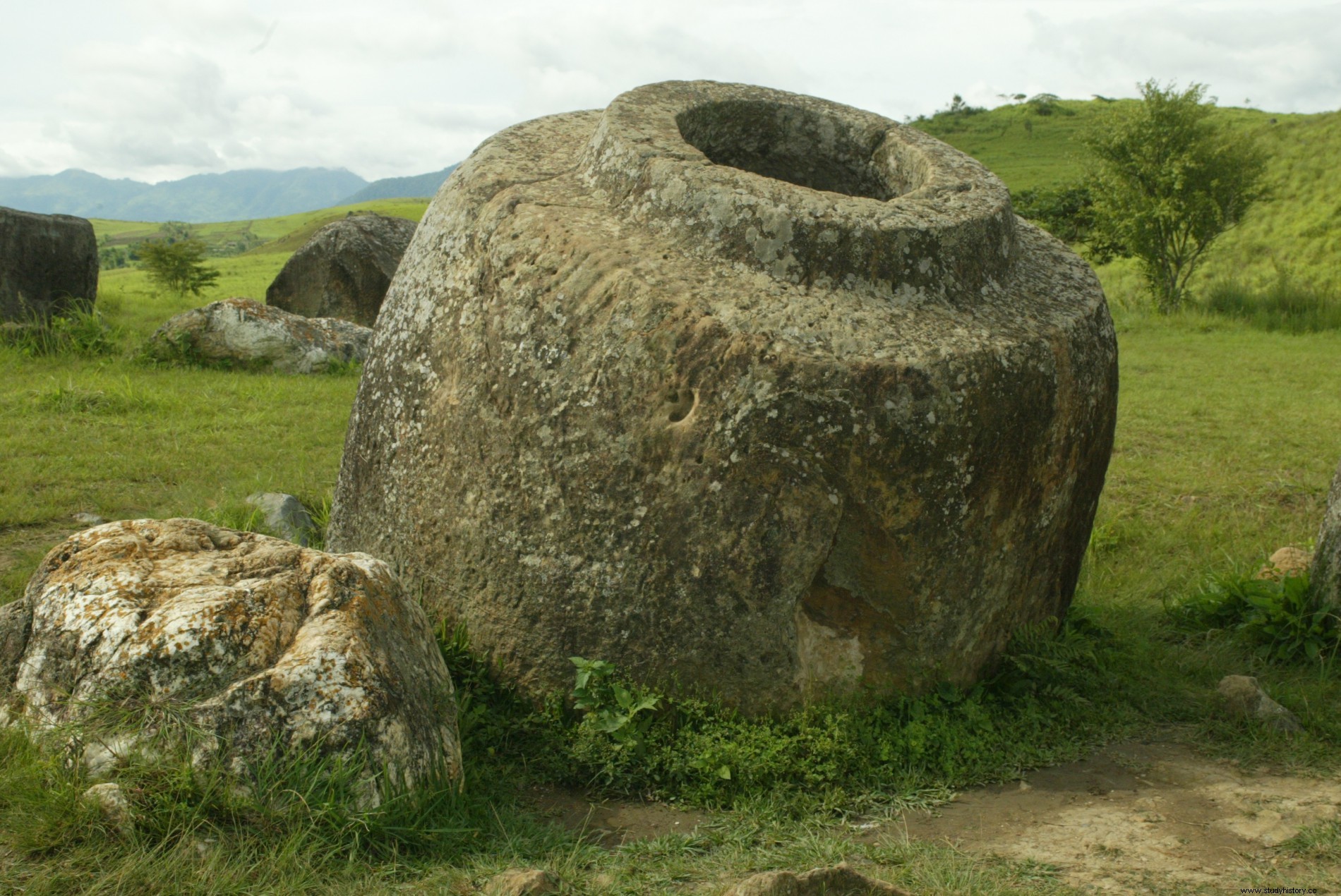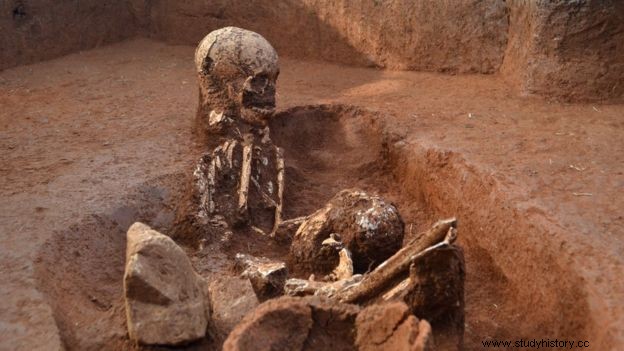 Archaeological excavations have resumed at the famous Plain of Jars site in northern Laos.
Archaeological excavations have resumed at the famous Plain of Jars site in northern Laos. URNS. Researchers from the Australian National University (ANU) have just unearthed burials dated 2500 years in the mythical Plain of Jars in Laos. This set of Iron Age urn fields is located in the mountainous province of Xieng Khouang, 250 km northeast of Vientiane, the capital. Considered one of the major archaeological deposits of Southeast Asia, this site could not be really studied until recently because of the many conflicts that have raged in the region in recent decades (read box ). An initial inventory of urn fields carried out under the aegis of Unesco had made it possible to locate 52 sites in 2005 (read Sciences et Avenir n°706). Today, 90 sites are now listed as part of the Australian Archaeological Project led by Douglas O'Reilly, with support from the Australian Research Council, Monash University (Australia) and the Department of Information, of Lao Culture and Tourism.

In the 1930s, hundreds of stone-cut jars, 1m to 3m high, were discovered on top of hills in northeastern Laos.
These new studies will allow archaeologists to have a better view of what could have happened in these plains around 500 BC until 600 AD. At one time – which remains to be clarified by new dates – the local populations carved huge jars in caves, quarries or outcropping blocks of granite, before transporting them to the top of the hills. One to three meters high, they each weigh several tons. "These jars were probably used to hold the dead while the bodies were decomposing", explains Dougald O’Reilly, project manager.

A 2500-year-old grave buried in the ground, first unearthed in the Plain of Jars, Laos.
At the feet of some of them, archaeologists had already unearthed during previous surveys smaller ceramic urns, buried 30 cm deep, around which had been collected carnelian and shell beads, as well as objects in bronze. These cylindrical vessels contained human bones. This year, the Australian team especially discovered a 2,500-year-old burial in the open ground, the first encountered to date in the plain, confirming the funerary nature of these places.
It is to a Frenchwoman, Madeleine Colani, researcher at the EFEO (French School of the Far East) that we owe the discovery of these mysterious sites (Thong Hai Hin ) which she detailed in her book on The Megaliths of Laos . This new Australian research will make it possible to really begin their study on a large scale, far from the local legends which make these giant vases containers intended to store the rice alcohol of the Buffalo King or to collect rainwater. And perhaps allow the recognition of this major archaeological site in Asia which is still not on the UNESCO World Heritage List.
The Plain of Jars has long been one of the most dangerous archaeological sites in the world, hence the delay in its study. A large number of UXO (Unexploded ordnance / unexploded devices), vestiges of the wars of the 20th century, stuffed the ground. Colonial wars first, operations of the American army and the CIA from 1964 then... Laos had the sad privilege of being the most bombed country in the history of the Vietnam War:two million tons of bombs were dumped there between 1964 and 1973. During the secret war waged there by the Americans against the Communists of Pathet Lao and their North Vietnamese allies, sixteen DCA (air defense) posts were concealed in the Plaine des Jarre. By 2005, more than 127 UXOs had been found in just one of these archaeological deposits. But all of that is now ancient history. All of the archaeological sites have been completely cleaned up and are now completely safe.

During the secret war between the Americans and the Communists of the Pathet Lao between (1964-1973), in Laos, posts of DCA (air defense) were hidden in the heart of the archaeological site of the Plain of Jars, as indicated this painting. ©Bernadette ARNAUD
